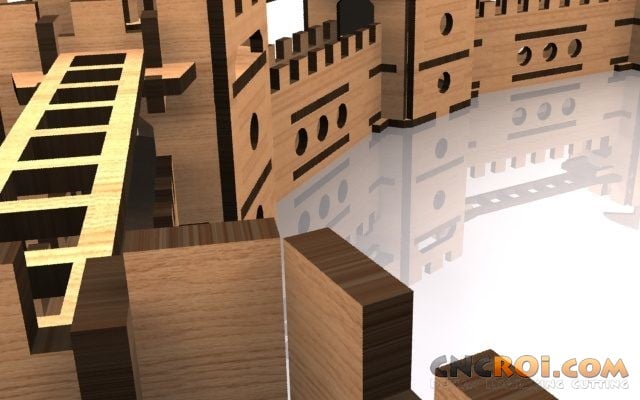Medieval Castles and Siege Weapons
I really enjoy having fun designing medieval castles and siege weapons, something about that era in human history has a very functional trait to it, only the bare essentials wickedly overbuilt!
https://vimeo.com/208176485
Many people ask me why I designed the above castle, one, it was a challenge but also, I wanted to design something for Trotec Laser Austria (manufacturer of my machine btw) to showcase at an annual toy fair. I designed, they cut!
What I like about the medieval era engineering wise isn’t just isolated to medieval castles though, it seems that everything was conceived with the thought of “what can we build NOW that will protect us later” yet “we can use RIGHT NOW.
Take a look at mangonels and onagers, even baliste, their function is incredibly simple yet the power they produce is amazing given the lack of gun powder or a modern understanding of physics.
Strong material throwing hard material, and voila, a weapon.
Want something with a bit more destructive power? Put the tree on fire before throwing it and hey, let’s add some tar to it while we are at it too!
https://vimeo.com/205389856
How to protect yourself from a flying tree? Well, build a castle that is made of rock!
The solution to harder, faster and bigger projectiles was simple, make the walls thicker, more re-enforced and taller.
The way to get around that is to make siege weapons bigger, more powerful and able to throw things even faster and harder.
And so the cycle goes around and around… until gun powder.
The biggest downfall to all those massive castles and ever increasing siege weapons of the era was the introduction of gun powder as it meant you could make explosive rounds that, regardless of how hard your fortification was, would eventually give way.
By far my favorite medieval castle I’ve ever designed, and I’ve since made far more complex and simple ones, is the Medieval Castle Walls in the video below.
It’s so simple, just a few pieces, repeated all around to form the wall structure.
The above design is really no different than the 3D printed version, it’s just cut-up in quarters instead of many more repeating parts.
Same with their war weapons.
It’s just like a crossbow but bigger to throw heavier things with more force, the fact that a larger superstructure is required is secondary, it’s built to support the action it’s about to do.
Back then, there were no CNC machines, no power tools, no electricity even, it was just a hand and mouth existence where inbetween, it was building time and the activities that supported what the King wanted to be done.
It’s incredible what was built using so little knowledge compared to what we know today, what makes medieval castles and siege weapons fascinating is how relatively simple they were for such a relatively complex task.
